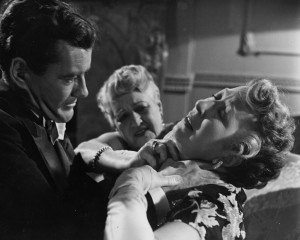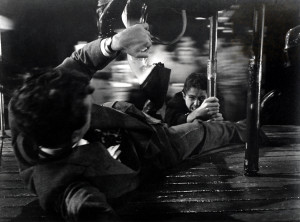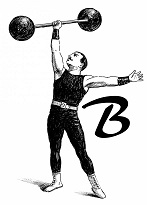Widely regarded as one of the finest films brought forth by legendary director Alfred Hitchcock, 1951’s “Strangers on a Train” takes a premise first conjured in a Patricia Highsmith novel and sets it to the sounds and visuals of the big screen.
What Hitchcock does is take a unique story and blend his masterful talents as a filmmaker, the result being ripe fodder for dissection of his brilliant abilities.
Subtleties such as a seemingly benign brushing of feet on a crowded train, and a tennis match occurring simultaneously with a back and forth scheme playing out, serve as bookends to Hitchcock’s unmatchable style.
The premise consists of a chance meeting between two strangers on a typical northeast commuter rail. Through conversation, we learn that, like all of us, each man could stand to benefit if someone else in their lives were to suffer an untimely death.
The brief encounter concludes with calm and cool tennis star Guy Haines (Farley Granger) exiting the train without a thought or concern involving the encounter. The overly hyper and loquacious Bruno Anthony (Robert Walker) has other ideas in his murderous and psychotic mind.
The contrast between the two men is perfectly captured by Hitchcock – from the discrepancies between the intentions of the two (banal chitchat for one and a binding contract to the other), to the variance in style between each man’s pair of shoes.

Each actor owns the role given in a perfect way. Granger is even-keeled and docile, the perfect makeup for a star athlete. Walker is overly compulsive and narcissistic – traits that genuinely accompany a kook, a role he perfectly embodies and seems to thirst on.
Hitchcock would have little sway in the rest of each actors career which ironically, would be complete opposites as well.
While “Strangers” would serve as the most recognizable film each man would play in, Farley Granger would go on to a filmography that literally spans seven decades, his last role coming in 2001 at the age of 76.
Sadly (and eerily) Robert Walker would die at the age of 32, less than two months after the release of “Strangers,” the victim of a drug and alcohol overdose.
The delicate decade of the 1950s does cause some areas of the film to suffer. Each man on the train has someone they want out of their lives, but the story goes almost out of the way to generate unneeded sympathy for the characters.
For Guy Haines its his spiteful and borderline evil wife Miriam – a manipulative sort that is carrying the bastard child of one of her numerous affairs, and is the only cog standing in the way of Guy marrying his true love Anne (Ruth Roman). In Bruno Anthony’s life, the intended victim is his verbally abusive and dominating father.

In both cases, I think it would have been interesting to leave these characters out of the story completely. Let the kill for kill deal stand as is. Further excuses and reasons aren’t really needed to have a wretched shrew of a wife snuffed out. The same goes for a grouchy father figure whose death will leave see you inheriting a fortune.
My only other complaint is again something era-driven. While the script and acting are superb building blocks for a top line thriller, the score is brutally awful and renders any and all tension completely moot. Background music is often overlooked. When its good its a perfect accompaniment to a scene. When its bad it not only stands out, it ruins the ambiance.
The infamous carousel scene at the end is a bit corny compared to todays standards, but nevertheless adds a decent amount of excitement.
“Strangers on a Train” is a very good film. Its shortcomings can be overlooked when compared to the artistic form that is Hitchcock. A true classic, check it out for its solid story and great acting. Its a good demonstration in the art of film making.
by – Matt Christopher


